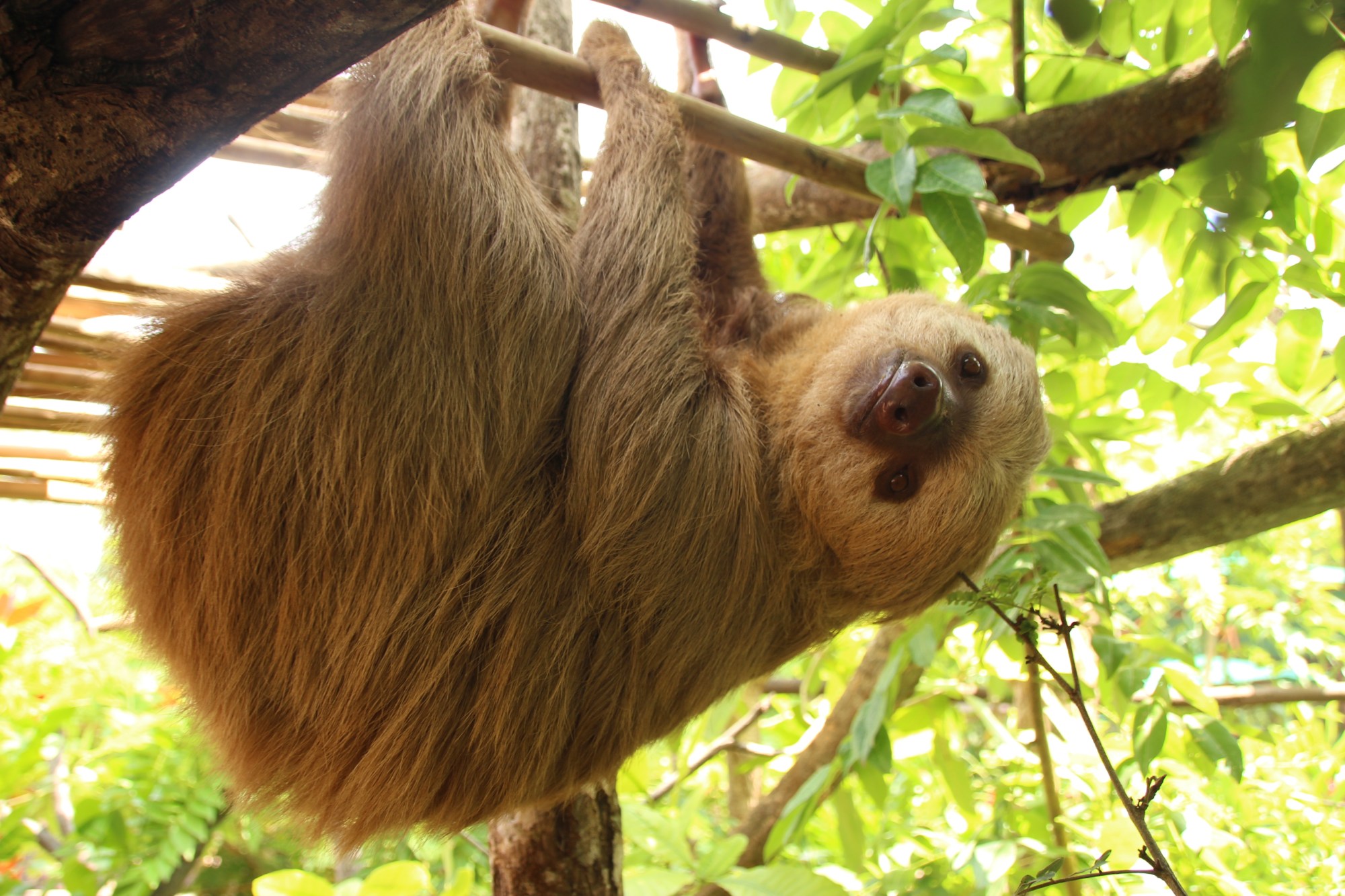Diamante Eco Adventure Park: Sloths in Costa Rica

SLOTHS IN COSTA RICA: YOUR COMPLETE GUIDE
Diamante Eco Adventure Park is home to three beautiful sloths at our Animal Sanctuary. They are Lucy, Mia and Gilbert. They are two-toed sloths, one of the two species of sloths in Costa Rica. Sloths are masters of camouflage and are hard to spot in the wild. At our Costa Rica Sloth Sanctuary they enjoy an open habitat which makes it easier to see them up close. We also do daily feedings and it is the best way to see them moving! Keep reading to know all the basics about these beautiful creatures and how to see sloths in Costa Rica!
NAME
The word “sloth” is first found in the twelfth century meaning “laziness”. “Sloth” is also an adjective for slow. Their scientific genus “bradypus” means “slow feet”. So it made a fitting name for this magnificent creature when they were discovered. In fact the only time they have bursts of speed is during emergency flights. And swimming! They are surprisingly good swimmers with their long arms and legs.
SPECIES
There are two species of sloths: two-toed and three-toed. Although the name is misleading given that all sloths have three toes. Actually the species name refers to the number of fingers. But two-toed sounds way better than two-finger! So let’s not duel on that. Their main physical differentiation, apart from the fingers, is their coloration (At least for the two species of sloths in Costa Rica). Three-toed sloths tend to be a grey color, with a white face mask that makes them look smiley all the time. Two toed sloths tend to be more beige to brown and lack the face mask but still offer a great smile. Three-toed sloths also possess an extra cervical allowing them to turn their head 270 degrees! Also three-toed sloths are diurnal while two-toed are nocturnal.
PHYSIOLOGY
Sloths have many physiological adaptations that allow them to live an upside down life. First their fur grows in a direction away from their extremities. This allows the water to run through them when it rains. Also their fur hosts symbiotic algae that turn their coloring green-ish. Hence it provides great camouflage from predators. Second their claws have evolved to support their hanging position from the trees and spend zero energy. Their grip strength is such that very little can bring them down. Third, their organs are literally attached to their body. This is the main reason they can live upside down. The adaptation makes it possible for them to breathe because their lungs are not crush by the other organs.
DIET
Surprisingly, sloths idleness is due to a metabolic adaptation because of their diet. Sloth’s main diet consists of leaves which provide little energy and are hard to digest; so one meal for them will take up to a month to digest fully. As their diet provides little energy they need to conserve their strength for necessary movement and metabolic needs. Three-toed sloths in Costa Rica actually eat one specific type of leave found in the central and south pacific and Caribbean. In fact, their metabolic system is so slow that they only “go to the bathroom” once a week if they do. And that is also the only time a sloth will descend from their trees.
It is said that this behavior is due to safety reasons. There is a theory that sloths go down because they do not want their feces to make any sound when dropping from up high for fear of giving up their hiding place to predators.
Our sloths are fed daily at 9:30Am, 12:30PM and 3:30PM – come visit and do not miss out on the sloth feeding!
HABITAT
Sloths can be found throughout Central and South America. They usually prefer the rain and cloud forests. Sloths in Costa Rica can be found in large numbers in the Caribbean side (Limon) and in the Central and South Pacific (Manuel Antonio National Park is a gold mine!). They are solitary creatures and the closest relationship they have is when mating or sharing a tree to sleep! Sloths often prefer to have an entire tree to themselves, but they have no problem sharing. Their natural predators are eagles, jaguars, ocelots and some snakes.
WHERE TO SEE SLOTHS IN COSTA RICA?
If you are looking to find the slow smiley sloths in the Costa Rican wild, we would recommend going to National Parks. Manuel Antonio, Tortuguero, Puerto Viejo or the Osa Peninsula are great places! But be sure to go with a natural guide, given that they are very good at camouflage and it might be difficult to spot them. So if you really want to see them, we also recommend coming to an Animal Sanctuary that hosts them.
If you want to come visit Lucy, Mia and Gilbert at Diamante Eco Adventure Park here are your options:
- Discovery Pass ($42): Enter our Animal Sanctuary and meet our wildlife family: Lucy the sloth, Nico & Sama the jaguars, Balu the white faced monkey, King Julian our largest iguana and many more!
- Adventure Pass ($118): experience the full zip line tour plus one extra cable that runs through our animal sanctuary and a hanging bridge over the crocodiles! Finish the tour inside of our top of class animal sanctuary and enjoy our wildlife family. This pass also includes a buffet lunch at the Welcome Center and access to our beach activities (stand up paddle board, snorkeling, kayak and hanging out at the hammocks).
Don’t miss out on getting to know the sloths in Costa Rica! Experience the best Costa Rica tour while getting to see these smiley faces!
Pura Vida!





